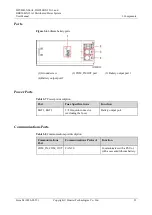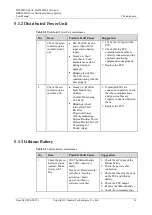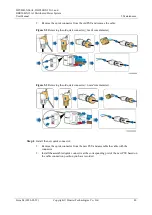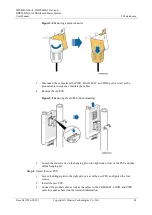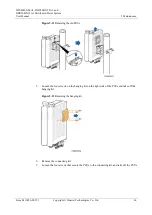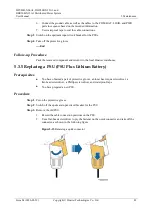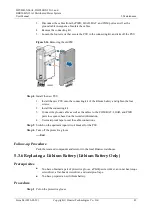
DPU40D-N06A3, DBU20B-N12A3, and
DBU50B-N12A1 Distributed Power System
User Manual
5 Maintenance
Issue 04 (2020-02-29)
Copyright © Huawei Technologies Co., Ltd.
37
Solution
1.
Check whether the battery is located in the heat dissipation area of other equipment. If so,
isolate the heat source or relocate the battery.
2.
Check whether the discharge time in the high-temperature environment meets
requirements. If not, replace the battery.
5.2.15 Overcharge Protection
Possible Causes
The PSU charge voltage is incorrectly set.
The PSU is faulty.
Solution
1.
Check whether the equalized and float charge voltages are correctly set (see the appendix
"Technical Specifications"). If not, adjust the settings based on site requirements.
2.
Check whether the PSU output voltage is excessively high. If it is higher than the
configured equalized or float charge voltage and cannot be adjusted, replace the PSU.
5.2.16 Overdischarge Protection
Possible Cause
The battery capacity is low due to a long-time AC power failure.
Solution
Check the cause of the AC power failure and rectify the fault.
5.2.17 Battery Cell N Fault
Possible Cause
The electrochemical cell is faulty.
Solution
Replace the faulty module.
5.2.18 Discharge Overcurrent Protection
Possible Causes
The load exceeds the maximum power of the lithium battery.
The load is short-circuited.



